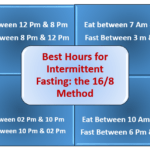Type 1.5 Diabetes, as the name suggests, has features of both Type 1 Diabetes and Type 2 Diabetes Mellitus. It is also referred to as LADA or Latent Autoimmune Diabetes of Adulthood.
Type 1.5 diabetes is an autoimmune diabetes primarily affecting young adults and is usually progressive. It accounts for 2-12% of all cases of diabetes in the adult population.
As with T2DM, individuals with LADA are older at onset, do not require insulin on diagnosis, and initially respond to oral hypoglycemic agents.
However, they have the immune markers associated with patients with T1DM, although the rate of beta-cell destruction is much slower in LADA as compared to T1DM.
Type 1.5 Diabetes (LADA Diabetes) Diagnosis:
Type 1.5 diabetes is diagnosed just like T2DM and T1DM. A patient is labeled diabetic when two or more of the blood sugar readings are above the normal range:
- Fasting blood sugars exceeding 125 mg/dl (>6.9 mmol/L)
- 2 Hours post-meal blood sugar readings exceed 199 mg/dl (11 mmol/L)
- Hemoglobin A1C of 6.4% or more
These are the cut-off readings to label a patient as diabetic. However, the diagnosis of Type 1, Type 2, and Type 1.5 diabetes requires further tests and criteria.
LADA Diabetes, or Type 1.5 Diabetes, is usually diagnosed when a person is diagnosed with diabetes and has the following features as well:
- LADA diabetes usually occurs in non-obese Individuals
- Individuals are adults with an age of onset of diabetes is 30 years or more.
- People with type 1.5 diabetes are usually insulin-independent for at least six months after the diagnosis of diabetes is made.
- Presence of islet cell antibodies
A significant proportion of people diagnosed with T2DM may actually have LADA, and thus, antibody testing may be important.
However, if not possible because of economic concerns, the presence of one or more of the following factors should be sought as an indication for antibody testing:
- Family history of T1DM or autoimmune diseases
- Individuals with Diabetes and a Normal BMI or slightly overweight
- A young age of onset ( younger than 60 years and older than 30 years)
- Poor metabolic control
Diagnosis of LADA or Type 1.5 diabetes is important as misdiagnosis results in poor glycemic control and an increased risk of long-term complications.
Similarities and Differences between Type 1, Type 2 Diabetes, and Type 1.5 or LADA Diabetes [Ref]:
Type 1 Diabetes | Type 2 Diabetes | LADA | |
| Age of Onset | < 35 years | > 35 years | ≥ 30 years |
| C-peptide levels | Very low | Normal to high | Low |
| ICA | Often positive | Negative | May be positive |
| GAD-65 antibodies | Often positive | Negative | May be positive |
| IA-2 | Often positive | Negative | May be positive |
| IAA (Insulin Autoantibodies) | Often positive | Negative | May be positive |
| Circulating insulin | deficient | Levels are high and Insulin resistant | Progressively deficient |
| Time to require insulin | At disease onset | Can be many years | Usually within 6 months but variable |
Which Autoantibodies are associated with Type 1.5 Diabetes (LADA Diabetes)?
Since LADA is an autoimmune disease as the name suggests, Latent autoimmune diabetes of adulthood, there is a strong association between autoantibodies and the development of the disease.
Some of the antibodies that have been studied include:
- Glutamic acid decarboxylase autoantibodies, GADA (the most sensitive marker)
- Protein tyrosine phosphatase auto-antibody (IA-2A)
- Islet specific zinc transporter isoform 8 (ZnT8)
- Islet cell antibodies (ICA)
- Insulin autoantibodes (IAA)
What are the Symptoms and Signs of Type 1.5 Diabetes (LADA Diabetes)?
LADA exhibits heterogeneity not only in clinical features but also in the degree of insulin resistance and rate of beta-cell destruction.
Patients with higher GADA titers bear resemblance to T1DM and are typed LADA1. The components of metabolic syndrome are less frequent in these patients, and they are more prone to ketosis.
Moreover, C-peptide levels, a marker of residual beta-cell function, are lower in these patients. On the other hand, patients with lower GADA titers, typed LADA2, share characteristics with T2DM.
They are less prone to ketosi,s with components of metabolic syndrome more frequent in them. C-peptide levels are higher in these patients.
Complications of Type 1.5 Diabetes (LADA Diabetes):
Microvascular Complications of LADA or Type 1.5 Diabetes:
At the onset of the disease, the risk of microvascular complications (neuropathy, retinopathy, nephropathy) in LADA is 55% lower than that in T2DM however, there is a 25% increase in the risk 9 years after diagnosis, probably due to worse glycemic control.
Macrovascular Complications of LADA or Type 1.5 Diabetes:
The increase in the risk of macrovascular complications (cerebrovascular disease, coronary artery disease, peripheral vascular disease) is similar in patients with LADA and T2DM.
Treatment of Type 1.5 Diabetes (LADA Diabetes):
Treatment of LADA or type 1.5 diabetes aims at achieving good metabolic control as well as preserving beta cell function. The choice of treatment for LADA is based on C-peptide levels.
C-Peptide Levels <0.3 nmol/L:
- For patients with C-peptide levels less than 0.3 nmol/l, guidelines for type 1 diabetes mellitus can be followed, and thus, insulin treatment is essential for them.
- Some patients may benefit from a combination of oral medicines along with long-acting basal insulins. However, these patients may need to be observed and monitored for the development of ketosis.
- In patients with a history of diabetic ketoacidosis, treatment with insulin is essential.
C-Peptide Levels > 0.3 nmol/l and < 0.7nmol/l:
- This is the “gray area” and for such patients, modified American Diabetes Association ADA/European Association for the Study of Diabetes EASD guidelines may be followed.
- The word modified refers to avoiding hypoglycemic agents that cause deterioration of beta-cell function such as sulfonylureas.
- Such patients may best respond to a combination of basal insulin once or twice daily and insulin sensitizers.
C-Peptide Levels > 0.7nmol/L:
- These patients may be managed following ADA/EASD guidelines for T2DM with serial C-peptide measurements to rule out false-positive results.
- The preferred treatment of patients with LADA and C-peptide levels exceeding 0.7 nmol/L includes oral diabetes drugs. These include Insulin sensitizers, GLP agonists, and SGLT2 Inhibitors.
Which oral diabetes medicines may be used to treat type 1.5 diabetes or LADA Diabetes?
The following group of medicines may be used alone or in combination with basal or premixed insulin, depending on the degree of hyperglycemia:
- Metformin,
- Dipeptidyl peptidase 4 inhibitors (DPP4I) such as Sitagliptin (Januvia) and Vildagliptin (Galvus),
- Sodium-glucose cotransporter 2 inhibitors (SGLT2I) such as Dapagliflozin (Farxiga) and Empagliflozin (Jardiance),
- Glucagon-like peptide 1 receptor agonists (GLP1RA) such as Dulaglutide (Trulicity), Liraglutide (Saxenda, Victoza), and Semaglutide (Rybelsus or Ozempic)
- Thiazolidinediones (Pioglitazone)
These drugs may be given as monotherapy. However, if despite the use of these agents, HbA1c levels are above normal, these patients may have to be prescribed insulin.
SGLT2 inhibitors should be prescribed with caution because of the increased risk of diabetic ketoacidosis associated with their use. SGLT2 Inhibitors use is associated with an increased risk of euglycemic diabetic ketoacidosis.
However, in high-risk LADA patients, i.e. those with established atherosclerotic cardiovascular disease or chronic kidney disease, GLP1 receptor agonists such as liraglutide, dulaglutide, and Semaglutide (Rybelsus and Ozempic) and SGLT2 inhibitors such as Dapagliflozin and Empagliflozin may be preferred because of their proven cardiovascular benefits.
- Premium Ingredients: Our tea blend features high-quality Berberine, aromatic Oolong, and refreshing Mint, all organicall…
- Mint Flavored: Enjoy the cool, crisp taste of mint that perfectly complements the robust flavors of Berberine and Oolong…
- Unsweetened with Zero Calories: Crafted for those who appreciate the natural flavors of tea, our blend is completely uns…
- FULL SPECTRUM OF BENEFITS TO SUPPORT BLOOD SUGAR HEALTH: (1) Supports healthy blood sugar levels, (2) Supports healthy w…
- SUPPORTS THE 3 ESSENTIALS FOR HEALTHY BLOOD SUGAR: Sugar absorption, sugar production, and sugar usage. Only Glucocil ta…
- SOFTGELS FOR EFFICIENT ABSORPTION (*2,250mg OF ACTIVE INGREDIENTS PER SERVING): Doctor formulated, proprietary blend, 14…

- Advanced All In One Support Supplements for Women and Men – Our Cinnamon Ceylon capsules and Apple Cider Vinegar Pill (A…
- The Ultimate Ceylon True Cinnamon and Apple Cider Vinegar Supplements You’ve Been Looking For – Clean Nutra’s Gluco Defe…
- Introducing the Gluco Defend Blend – In addition to Ceylon Cinnamon True, ACV With The Mother, berberine capsules and re…

- This bundle includes: Natures Mades Diabetes Health Pack, 60 Packets with Portable Travel Pill Organizer Case
- 6 Supplements per Packet
- Multivitamin, Fish Oil, Magnesium, Vitamin C, Alpha Lipoic Acid, Chromium









